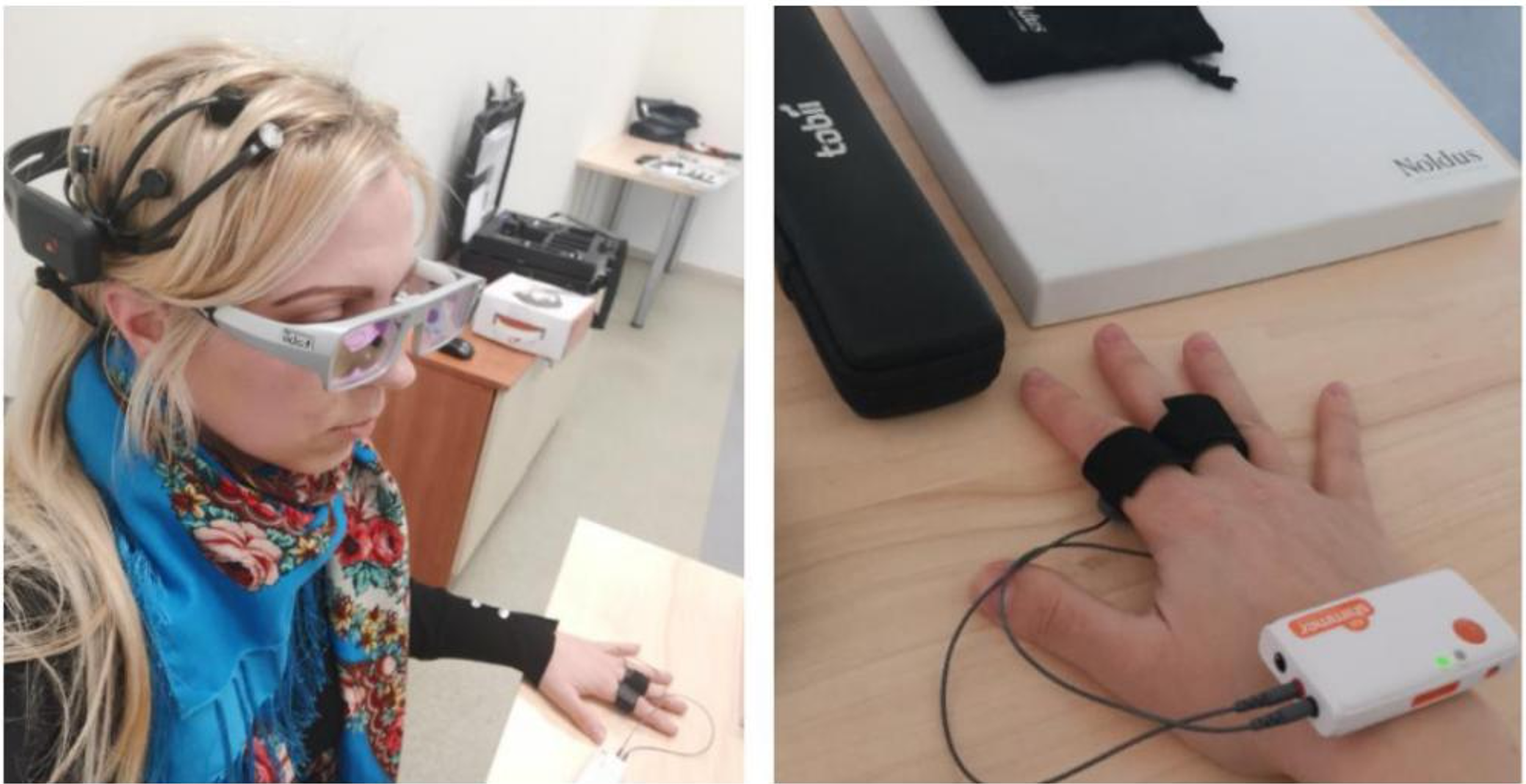The updated neuromarketing laboratory will reveal what is really hidden in the user’s mind

Neuromarketing laboratory researcher dr. V. Grigaliūnaitė demonstrates the capabilities of the devices
The neuromarketing laboratory established at the Faculty of Economics and Management at the Vytautas Magnus University has received new equipment that allows us to find out not only what a person says, but also what he does or even feels.
Neuromarketing research has been conducted at the faculty since 2014. The laboratory uses the latest physical and software equipment for neuromarketing research:
- electroencephalograph (EEG), which allows to evaluate cognitive processes occurring in response to a marketing stimulus;
- eye-tracking glasses and stationary eye-tracking equipment, which allow analyzing the trajectory and intensity of users’ visual attention to both marketing stimuli presented on the computer screen and marketing stimuli presented in the environment (outdoor advertisements, placement of goods on store shelves, etc. );
- an emotion recording system (face reader), which allows analyzing the change of emotions as a response to the presented marketing stimulus;
- equipment for measuring electrical conductivity of the skin (English GSR), which allows to assess the level of emotional arousal as a response to a marketing stimulus.
The laboratory also conducts an implicit association test (Implicit Association Test), which evaluates the strength of implicit associations between the presented concepts, thus allowing to determine a person’s attitude towards the analyzed object. Given the fact that a person is not always able (besides, not always willing) to explain his behavior, these technologies help to assess users’ cognitive processes, attitude, course of visual attention, time, level of excitement, emotions in a more detailed, accurate and objective manner. Undoubtedly, according to laboratory researcher dr. V. Grigaliūnaitė, in order to comprehensively evaluate consumer behavior as a response to a marketing stimulus, several neuromarketing research methods are combined (e.g. gaze tracking and an emotion measurement system helps to determine which specific element in a visual marketing stimulus causes a certain emotion) with usual marketing research methods (quantitative and qualitative). These interdisciplinary studies, when appropriate neuromarketing and conventional marketing research methods are integrated, allow conducting research of high scientific and practical value even now in Lithuania.












